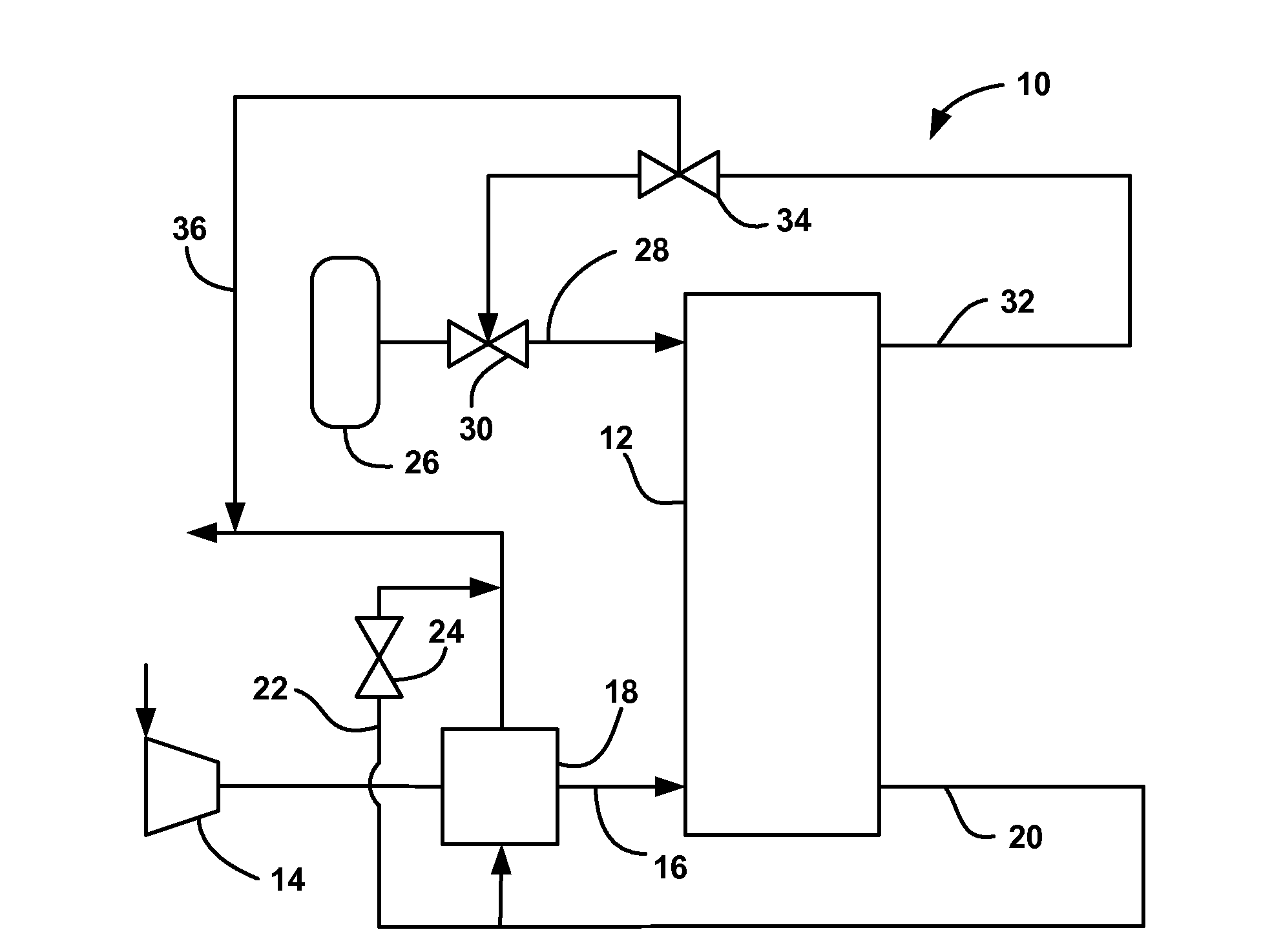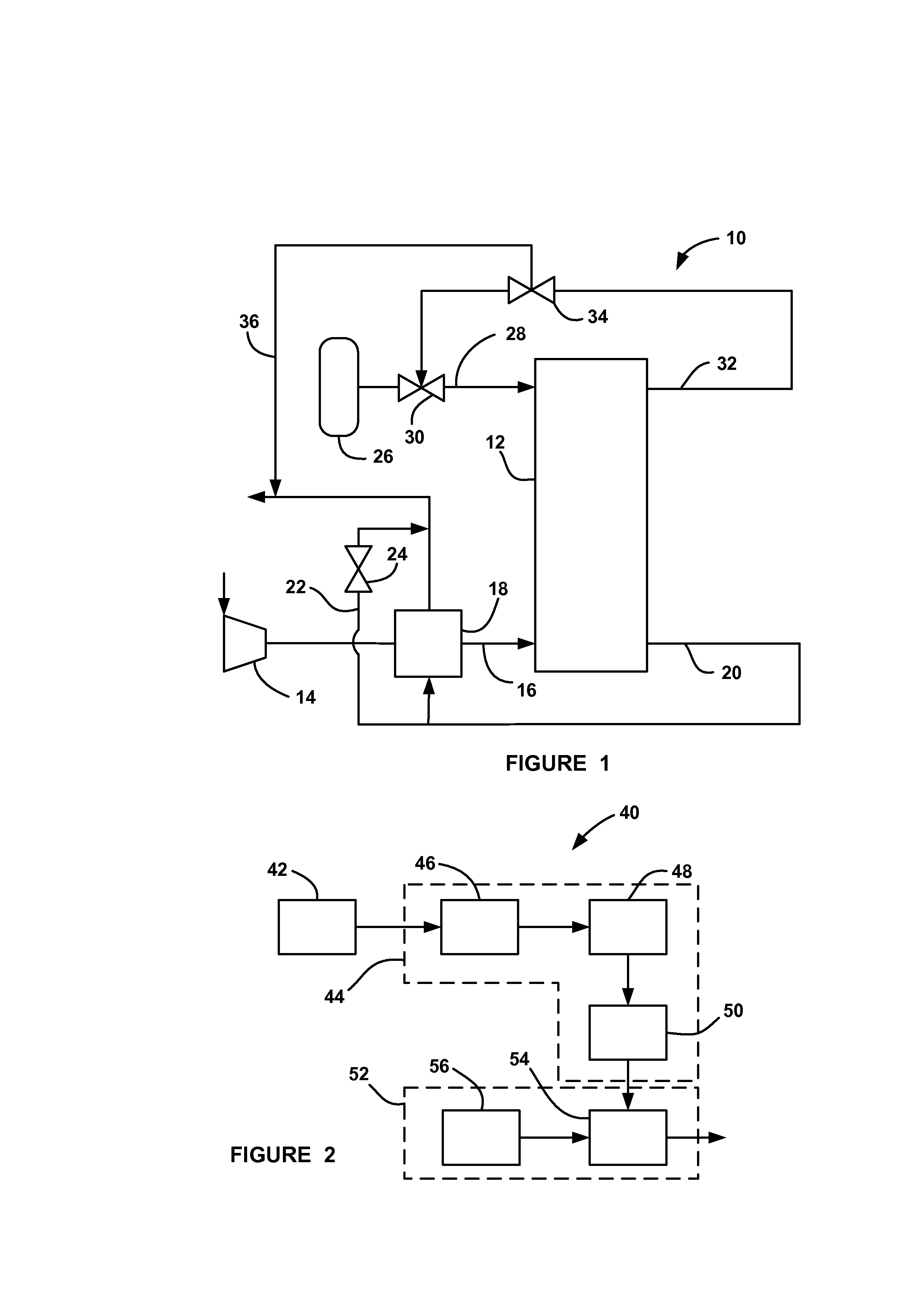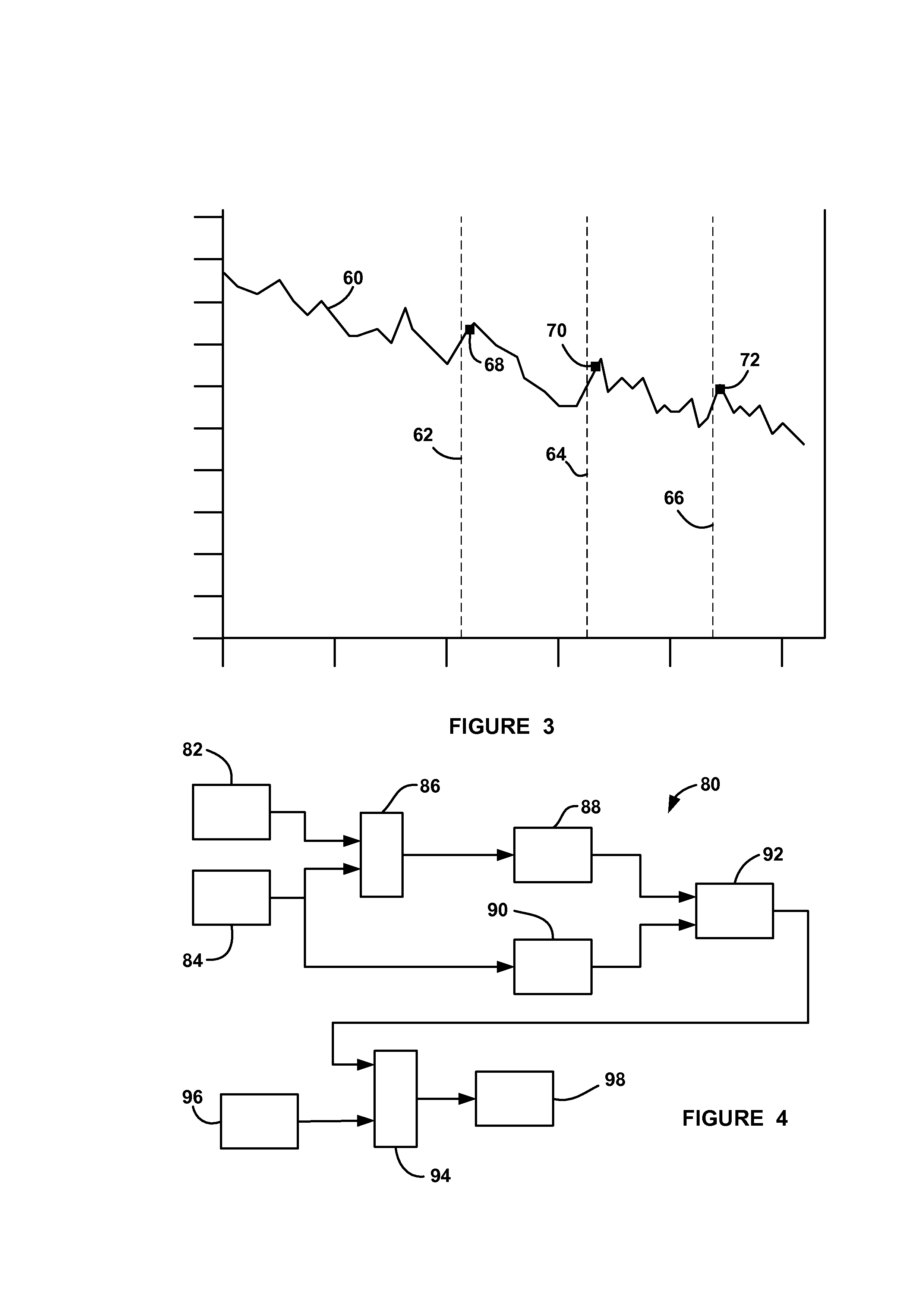Adaptive limitation of standby mode to enhance fuel cell system life
- Summary
- Abstract
- Description
- Claims
- Application Information
AI Technical Summary
Benefits of technology
Problems solved by technology
Method used
Image
Examples
Embodiment Construction
[0021]The following discussion of the embodiments of the invention directed to a fuel cell system that reduces the frequency of fuel cell stack stand-by based on estimated irreversible stack voltage degradation is merely exemplary in nature, and is in no way intended to limit the invention or its applications or uses. For example, the present invention has particular application for a fuel cell system on a vehicle. However, as will be appreciated by those skilled in the art, the system and method of the invention may have other applications.
[0022]FIG. 1 is a schematic block diagram of a fuel cell system 10 including a fuel cell stack 12. A compressor 14 provides airflow to the cathode side of the fuel cell stack 12 on a cathode input line 16 through, for example, a water vapor transfer (WVT) unit 18 that humidifies the cathode input air. A cathode exhaust gas is output from the stack 12 on a cathode exhaust gas line 20, which directs the cathode exhaust to the WVT unit 18 to provide...
PUM
 Login to View More
Login to View More Abstract
Description
Claims
Application Information
 Login to View More
Login to View More - Generate Ideas
- Intellectual Property
- Life Sciences
- Materials
- Tech Scout
- Unparalleled Data Quality
- Higher Quality Content
- 60% Fewer Hallucinations
Browse by: Latest US Patents, China's latest patents, Technical Efficacy Thesaurus, Application Domain, Technology Topic, Popular Technical Reports.
© 2025 PatSnap. All rights reserved.Legal|Privacy policy|Modern Slavery Act Transparency Statement|Sitemap|About US| Contact US: help@patsnap.com



